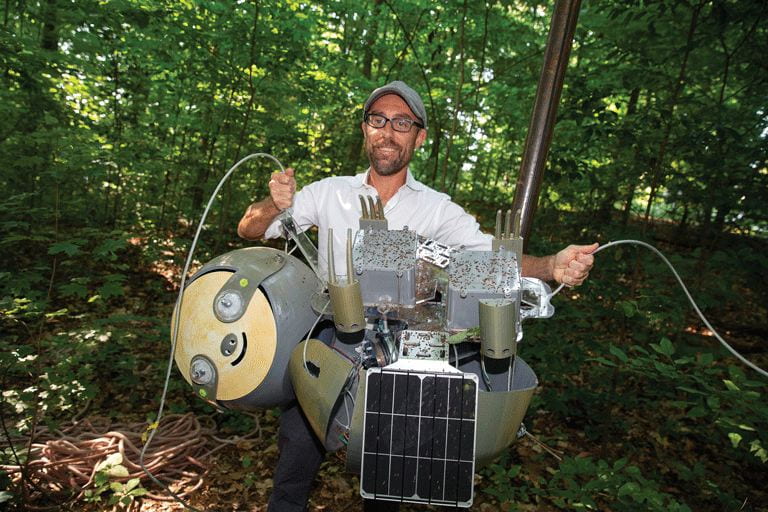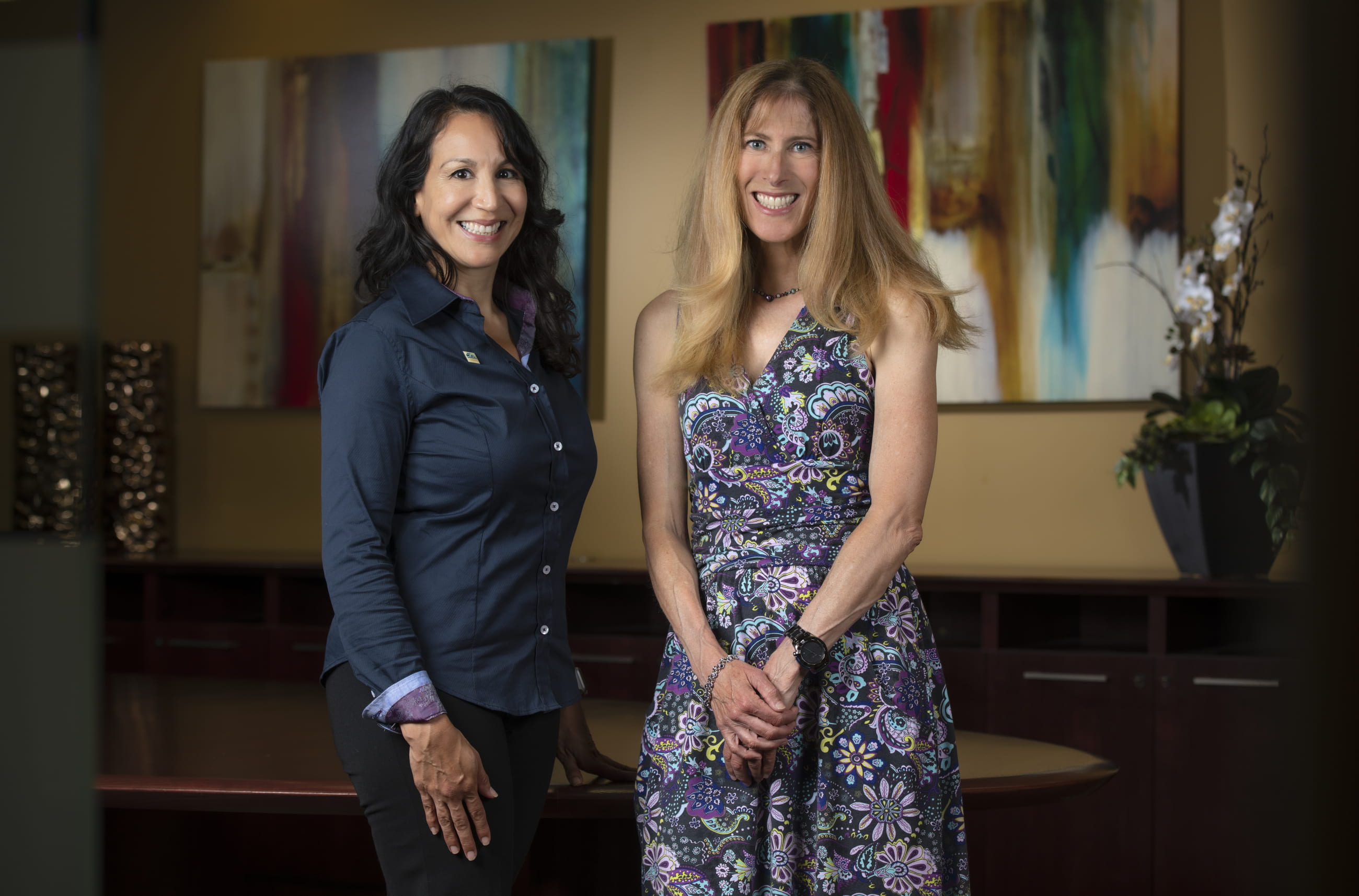From Sloths to the Soul of UCI
Stacey Nicholas Dean of Engineering Magnus Egerstedt explores slowness as a design paradigm in robotics
On a vacation with my family in Costa Rica a few years ago, I became fascinated with sloths – not because they were cute and cuddly but because I simply could not understand how such slow (and potentially quite tasty) animals could exist in an environment populated by jaguars and eagles. Their leisurely, low-energy lifestyle is somehow a viable survival strategy shared by pretty much all arboreal folivores (tree-dwelling leaf eaters) due to the dueling requirements of being big enough to break down and digest the complicated leaves, yet small enough to reside successfully among the treetops.
In fact, animals that occupy this particular ecological niche – such as koalas, two-toed and three-toed sloths, and some lemurs – are all roughly the same size, and they spend the vast majority of their time doing little else than digesting their food. When they do move, it typically happens at an exceedingly slow pace. In other words, slowness has become a response to a severely energy-constrained existence, which begs the question: Is there anything that we, as individuals and societies, can learn from such a deliberate approach?
[soundcloud url=https://soundcloud.com/theucipodcast/uci-dean-of-engineering-magnus-egerstedt-discusses-his-new-book-on-robots-in-the-wild?si=1cc3d27ca3784d5a88b7ec4441dc34a5&utm_source=clipboard&utm_medium=text&utm_campaign=social_sharing /]
Once back in the lab, I decided to explore what slowness as a design paradigm might have to offer robotics, which is my area of research expertise. The practical reason for this pursuit of slowness is that in many applications, being fast is irrelevant and even risky. Instead, a persistent and steady presence is what’s required. This is the case for robotic rovers roaming around on Mars. (It took the famous Mars rover Opportunity 11 years and two months to complete a marathon.) Similarly, agricultural robots out on farm fields for an entire growing cycle – tending to individual plants’ water, pesticide and fertilizer needs – must, in essence, only move at the speed of a plant.
In collaboration with a field ecologist, this novel and slow approach to robotics was put to use in the context of environmental monitoring. The resulting “SlothBot” was a solar-powered monitoring robot suspended in the tree canopies at the Atlanta Botanical Garden, where it measured micro-climate data for over a year, every now and then moving out from under the treetops to sunbathe and recharge its batteries. The SlothBot recently left this habitat and is migrating to UCI; it will participate in multidisciplinary projects aimed at understanding our natural world for the purposes of conservation biology and environmental monitoring and protection. The robot will reside at the beautiful Crystal Cove State Park, where it will turn into a beach dweller.
“We, as a society, are currently facing several defining and even existential questions, such as: How do we feed a growing planet? How do we reverse climate change? How do we provide affordable and effective healthcare to underserved populations? How do we structure our future societies so that artificial intelligence and robotics enhance the human experience? Engineering has its fingerprints all over those questions. But engineering alone does not have all the answers – nor even, at times, the right questions.”
We, as a society, are currently facing several defining and even existential questions, such as: How do we feed a growing planet? How do we reverse climate change? How do we provide affordable and effective healthcare to underserved populations? How do we structure our future societies so that artificial intelligence and robotics enhance the human experience? Engineering has its fingerprints all over those questions. But engineering alone does not have all the answers – nor even, at times, the right questions. As the new Stacey Nicholas Dean of Engineering, I am delighted to have found a campus community with a collaborative vibe and where multidisciplinary research is woven into the fabric. Several large-scale projects are underway combining engineering with climate research, clean energy, health and social justice. UCI’s values of inclusivity, collaboration, impact and innovation align perfectly with what I’m hoping to achieve as dean of The Henry Samueli School of Engineering.
When I first arrived on campus, I somewhat pretentiously asked the engineering department chairs if they could help me find the “soul” of UCI. Professor Vasan Venugopalan, chair of the Department of Chemical & Biomolecular Engineering, answered that question by walking me out into the middle of Aldrich Park. It’s telling that the center of UCI is a park rather than the typical campanile, statue, administrative building or quad. Here, every discipline is connected and can be reached by a short stroll through nature. This is extremely powerful, as it resonates directly with the themes of multidisciplinary collaboration, research impact at societal scales and nature as a source of inspiration.
In my own research and life, I’ve found that the way to new and interesting ideas is often to get away from the computer screen and the lab and do something different. Being in nature helps me think through problems and get a new (and sometimes surprising) perspective on whatever I might be wrestling with professionally or personally. There’s a saying that I really like: “You should sit in nature 20 minutes every day, unless you’re busy. Then you should sit for an hour.” I have no idea where this saying originated, but that doesn’t matter. The idea is clear: Put down this magazine, stop what you’re doing, and walk slowly across your own version of Aldrich Park to connect with someone from a different background. Be the sloth! Or even better, embrace the collaborative, innovative and supportive spirit that is so vibrant on UCI’s campus and be the anteater!



